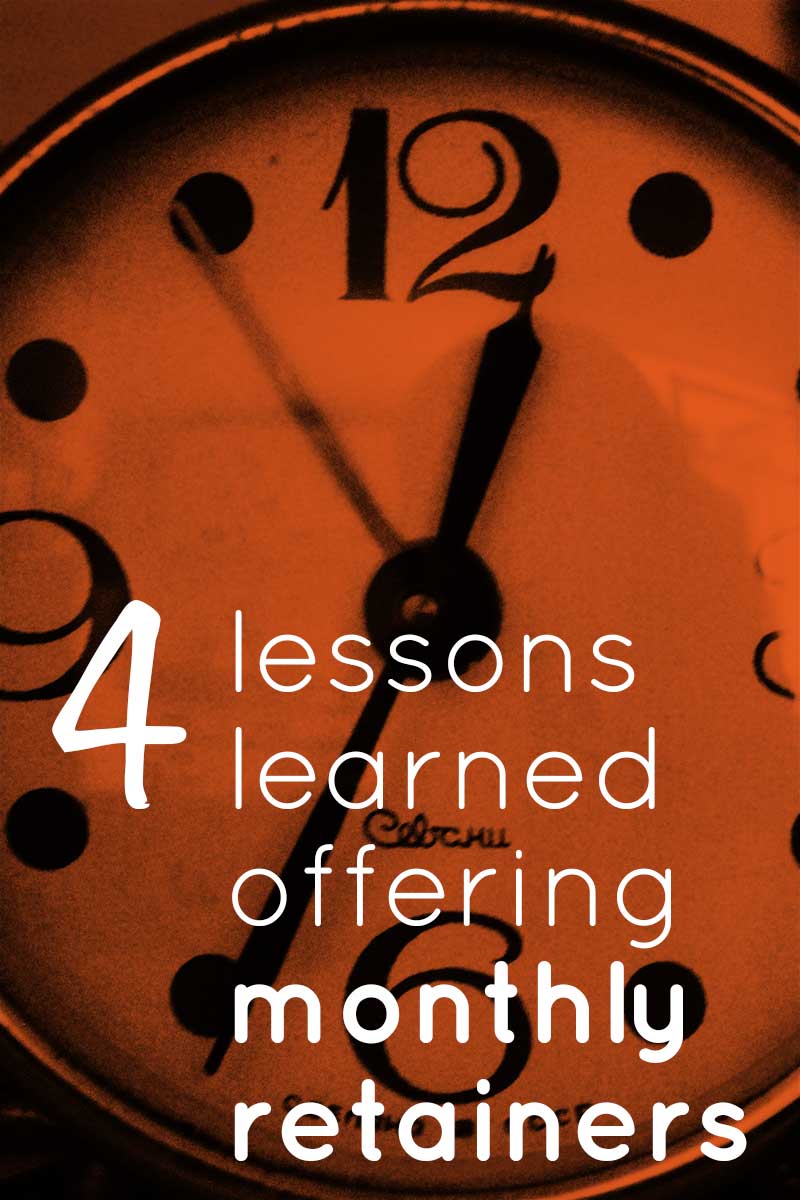For years I offered hourly work for anyone that needed my skills. it was great… except for the flux in hours my clients needed + no real way to schedule my time. so I decided to get clients set up on retainer – whether monthly or quarterly – to narrow the range in hourly requests + set myself up with a more manageable schedule.

I spent tons of time researching retainer contracts + systems, but still learned a few very valuable lessons that I want to share with anyone considering the same offering.
1. Minutes are precious to your clients
When working hourly without any retainer, my clients would occasionally check in on how much time they had used or how long a task would take before approving it. But for the most part they were content with sending their request + getting the subsequent bill for it at the end of the month.
The second I shifted to a monthly retainer, those clients treated each minute like a rare resource. Don’t get me wrong, I don’t blame them at all. If I was paying for 5 hours whether they got used or not, I’d want to get my money’s worth. But for some reason, I didn’t expect the significant influx of emails asking me for an update on time spent/remaining.
Which leads me to lesson #2…
2. Time tracking is an art
My billing system didn’t have a great solution for retainer services. It had a way to set up recurring invoices + a way to track time, but not a way to deduct the retainer payment from time used. So instead, I used a solution on my computer to track my time. It worked great until I realized it does absolutely no good for the clients that want to know how much time they have left.
When it comes to retainer or hourly work, my biggest bit of advice is to find + use a system that clients can easily access so you aren’t spending those precious minutes updating them through email or calls on time remaining.
3. The last week of your billing cycle will be full of weird requests
Once your clients know how much time they have left, they will use what they can during the month with standard requests. But if they find themselves with 2 hours remaining + 5 business days before the next bill comes, you can bet they will get creative with things they want you to do.
A few months into this service, I created a list of suggested tasks for each client based on their needs + business. That way if they have time left over, they pick from the list instead of sending an email that goes something like “What can you do with 54 minutes before EOB on friday?”
4. Everyone will ask for an exception at least once
With all of my research + my lawyer on my side, I drafted a retainer agreement that clearly explained how hours could be used + when they expire. During phone calls + email threads, I reminded my clients of the changes. With all of that clear communication, every retainer client I have has asked for an exception to the agreement within the last year.
Again, I don’t blame them. The answer is always “no” if you don’t ask. But I honestly did not expect a few dozen emails requesting various versions of exceptions to my retainer service within the first year of it existing.
Most of the requests had to do with extending the time available to use up hours. But some related to overage rates, the length of our agreement {I require a minimum of 3 months} + downgrading to fewer hours during slow seasons.
For anyone offering their time for money, I think retainers are an extremely smart way to go. Not only does it help you plan your monthly/quarterly income, it also keeps your schedule more in your control. Just be prepared for the shift in how you work + the types of emails you’ll get in return.
